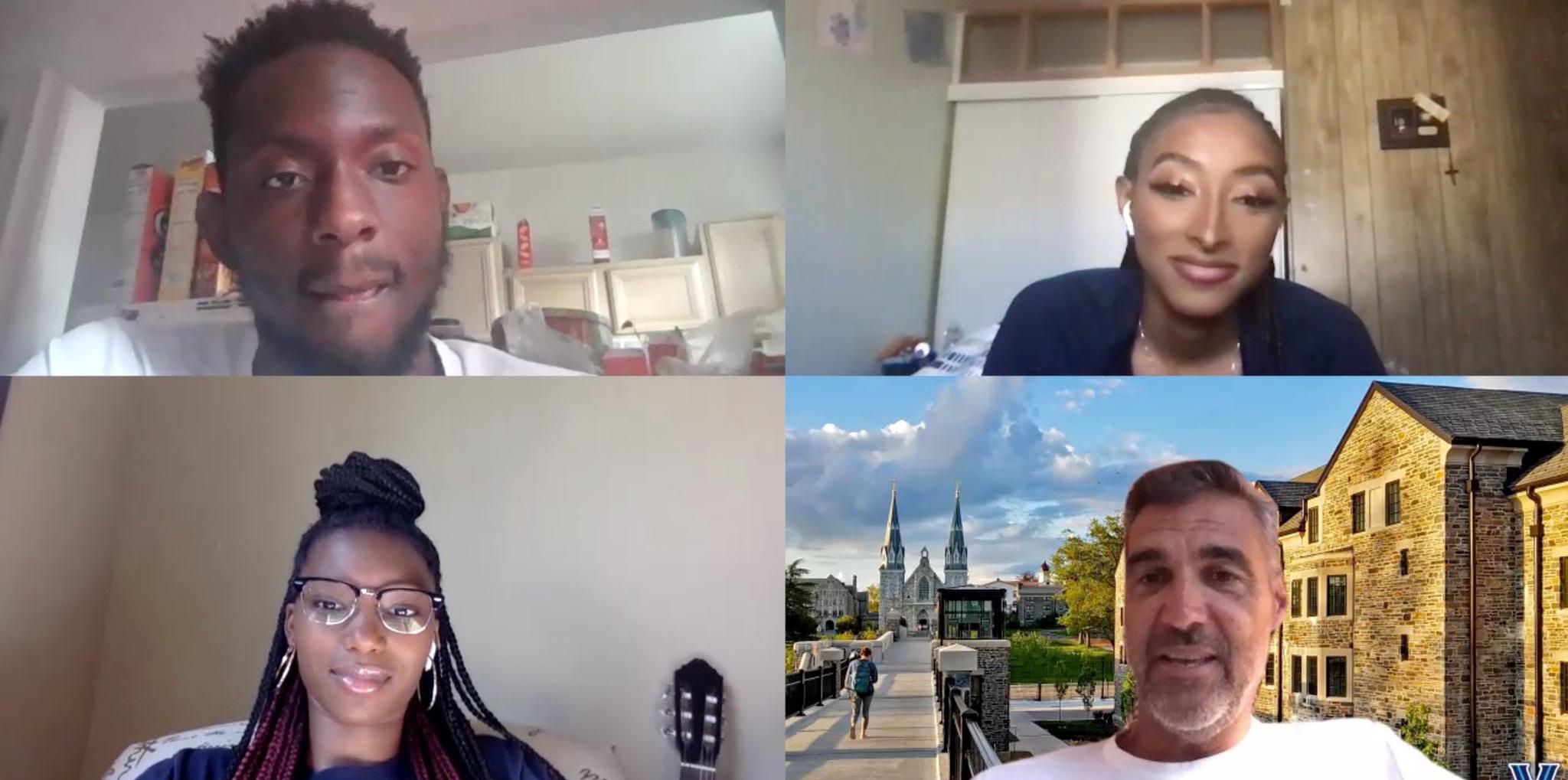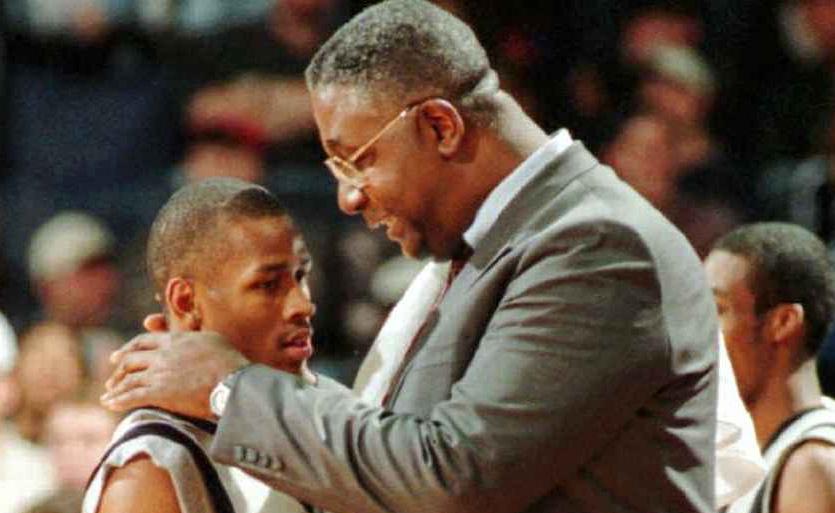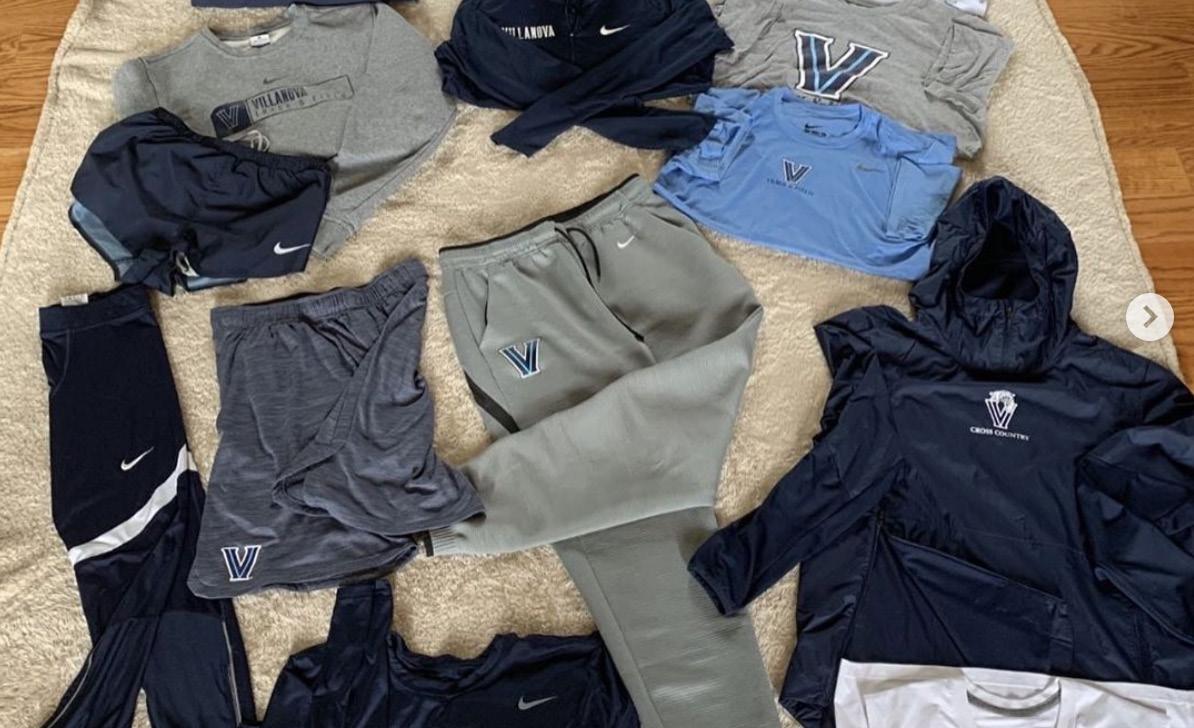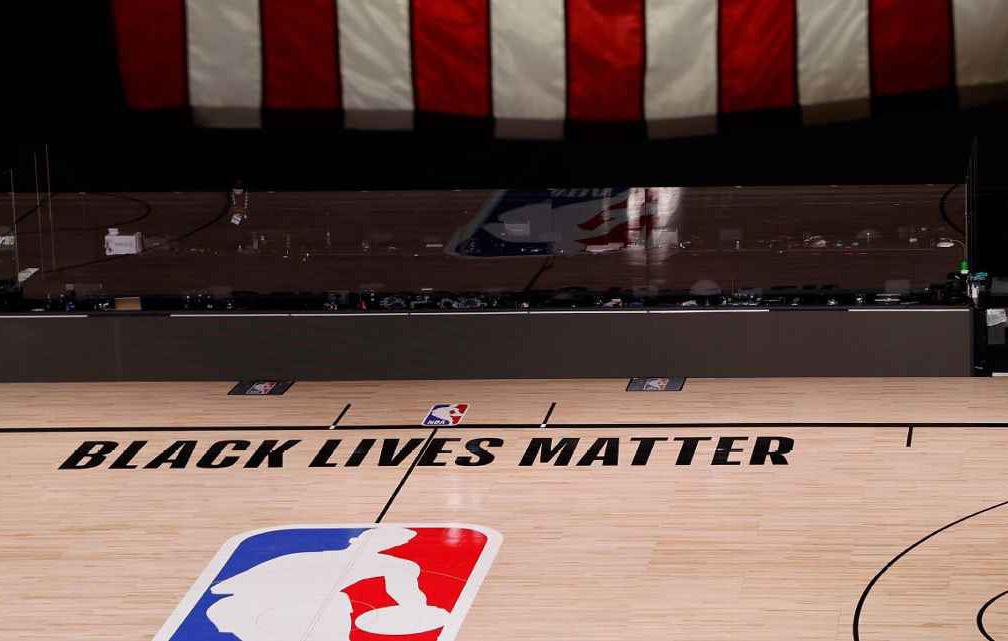
14 minute read
Sports
SPORTS Sanaä Barnes on Black Student-Athlete Group, The 13%
Rylie Eisenhardt Staff Writer
Nearly 100 days have passed since the murder of George Floyd at the hands of the Minneapolis Police Department. In this time, undeniable change has occurred and will continue to occur, driven by difficult conversations about race and privilege in our own communities. Several Black student-athletes on campus have taken up this challenge and founded a new organization called The 13%, which represents both the percentage of students at the University who are Black and the percentage of Americans who are Black. They introduced themselves and their mission proudly this summer, releasing a video made in partnership with the University’s media team. The idea for The 13% stemmed from a desire among many Black student-athletes to form a better support network for one another that Madison Burke Co-Sports Editor Renowned Georgetown basketball coach John Thompson Jr. passed away early Monday morning at the age of 78. Thomspon will forever be remembered as a sacred part of Big East basketball. Thompson was an advocate for racial equality during his 27 seasons as coach of the Hoyas. He led Georgetown to four Final Four appearances, the 1984 NCAA cham- pionship and seven Big East Conaddresses their unique experiences as Black students at a Predominantly White Institution. Sanaä Barnes, one of the most vocal leaders of The 13%, credits conversations with teammates about struggling to adapt to campus life as catalysts for wanting to form the group. The organizers received input from an academic intern working in the athletic office who mentioned that the University of Louisville actually had a program in place specifically to meet these needs. After seeking out the level of interest from other Black student-athletes, a small meeting was held, and the organization took off from there. As with many things in the last six months, the ongoing pandemic limited The 13% from making significant progress in terms of reaching official campus recognition. This changed with the murder of George Floyd in May. A group chat was made by Danielle Burns, a veteran of the women’s track and field team, with ference titles. His coaching career ended with an incredible record of 596-239. Thompson was named Big East coach of the year three times and UPI coach of the year in 1987. In 2006, he was inducted into the Naismith Memorial Hall of Fame. Craig Robinson, the Nation- al Association of Basketball Coaches executive director, praised Thomp- son during an interview with The Washington Post. “John Thompson Jr. altered the history of college basketball through both his on-court success
Cosby-Roundtree, Burns, Barnes and Coach Jay Wright join in a Zoom. Courtesy of @VUCoachJayWright Twitter several Black student-athletes in an effort to check in with everyone. “We talked about what should be done,” Barnes said, adding that many voiced displeasure with how the University “never addressed it.” The group decided that it was time to be heard. “You don’t hear much from the athletes on campus about social issues,” Barnes said. “We all have a lot to say but we don’t really know how to say it.” Barnes and Qadir Ismail of the football team began working on a script for a video to be released to the community. The first draft captured their frustration and anger. “It was time to say enough is enough,” Barnes said. Subsequent drafts toned down the message to come across as more friendly. Eventually, the group decided on a strong message that conveyed their frustration and passion but also a desire for change. It may be uncomfortable for some to watch, but that discomfort is necessary for genuine conversations to take place and for the community to grow. Since The 13% partnered with the University’s media team to produce the video, it had hoped to be able to release the video on the University’s varius social media platforms. After many productive conversations with Athletic Director Mark Jackson and University President Rev. Peter M. Donohue, O.S.A., Ph.D., the decision was made to release the video on the personal Twitter account of men’s basketball head coach, Jay Wright. Barnes, Burns and Dahmir Cosby-Roundtree of the men’s basketball team, were then invited to join and his passionate advocacy for equality for all coaches and stu- dent-athletes,” Robinson said. Thompson was the first Black coach to win an NCAA title in men’s basketball with the 1984 Georgetown team. He advocated for increased diversity among both basketball players and coaches. In 1989, Thompson walked off the court before Georgetowns’ game against Boston College, in protest of Proposition 42. The NCAA was barring athletic scholarships to freshmen who did not meet certain scholastic criteria and unequivocally affected Black student-athletes, leading to Thompson’s protest. A Georgetown varsity jacket from the 1980s hangs in the National Museum of African American History and Culture, due to the immense amount of progression that Thompson instilled in college athletics for minority students. Thompson coached and mentored future Hall of Fame play- ers Patrick Ewing, Alonzo Mourn- ing, Dikembe Mutomobo and Allen Iverson. Ewing and Iverson have released statements on Twitter, prais- ing Thompson and thanking him for his lasting effect on their lives as both basketball players and people. “Thanks For Saving My Life Coach,” Iverson tweeted. “I’m going to miss you, but I’m sure that you Wright on his podcast to discuss the video further, in addition to relating their experiences as both Black student-athletes at Villanova and as Black men and women living in the United States. Since returning to campus, The 13% have been recognized as an official University-sponsored organization. The team, including Barnes, Ismail, Joia McKinney, Darius Pickett, Jalen Phillps, CJ Pressley and Jaden Rolling, has been working tirelessly throughout the summer and into the fall to make their voices heard. They hope to still make an impact on campus life. This includes involvement in the upcoming 1842 Day, finding ways to bring in guest speakers, holding allyship meetings and connecting with the Black Student Union to develop a workshop about colorism in the Black community. “I would want the community to understand that there needs to be more,” said Barnes. “There needs to be more push not just for the Black community but for all underrepresented communities. It’s not ok to just not be racist, you have to be anti-racist for everyone. Until we fully accept all those different communities that are forming we can’t live up to Villanova’s mission statement, forming a better community for everyone. It’s time to speak about it. It’s time to make a stand. Being silent or saying ‘I can’t do that because I’m scared to offend people’ is not ok. People are going to be offended when you want to make a change.” The 13%’s debut video can be found on its Twitter account,
Loss of John Thompson Jr. Rocks Big East Basketball

@thethirteenp. are looking down on us with a big smile.” Iverson was arrested during his senior year of high school and all potential offers for college basketball had been revoked, except his offer from Georgetown. Thompson of- fered him a scholarship, and Iverson was later named Big East Rookie of the Year in 1995. Villanova head coach, Jay Wright, paid homage to the coach- ing legend tweeting immediately after the news of Thompson’s death broke and also making a further statement. “Coach Thompson was an icon of the Big East,” Wright commented. “I admired him as much as any coach, but I respected him more than anyone. His commitment to his players and their academic growth is something that inspired me as a young coach. What I respected most about Coach Thompson was his authenticity.” “Coach Thompson was a great man” Wright continued. “Our game and college athletics has lost a won- derful, impactful leader whom we will all miss.” Big East basketball has been forever changed by the legacy John Thompson Jr. left on the conference. His advocacy for minority students and coaches continues into the future of college basketball.
Track and Field “Super-Super Senior” Organizes Raffle to Support 52nd Street Project in West Philadelphia
Frank Crippen Staff Writer
Villanova men’s track and field runner, Casey Comber, had himself a busy summer. The stud 3:57 miler and former NCAA indoor nationals runner-up put in serious training as he enters his sixth year of competition as a self-proclaimed “super-super senior.” He also helped in organizing a raffle to help contribute to the Enterprise Center’s “Support 52nd Street” proj- ect. Comber and his teammates held a gear raffle through the @villa- novaxctf Instagram page and other social media pages. All proceeds went to the 52nd Street corridor in West Philadelphia, an underdeveloped and predominantly Black neighborhood, hit hard by the effects of COVID-19, looting and property damage that occurred this summer. The Villanovan had the opportunity to catch up with Comber and about his charity efforts, his feelings about the upcoming track season and everything in between.
The Villanovan: What is the “Support 52nd Street” project and what made you decide to get involved with it?
Comber: The Enterprise Center is an organization in Philadelphia that helps minority entrepreneurs, a lot of which don’t have access to capital that they need to either grow their businesses or at least keep the doors open. Particularly, in the wake of the pandemic, as well as the looting and rioting that happened in certain areas of the city, there were a lot of struggling businesses. Basically, the Enterprise Center Meghann Morhardt Staff Writer In response to the shooting of Jacob Blake, more than 15 professional sporting events were boycotted or postponed last Wednesday, Aug. 26, to show player support for the Black community and the Black Lives Matter movement. There had been rumors and discussions about the possibility of boycotting games in light of recent events, but no one knew what to expect until the Milwaukee Bucks made their decision. The players, along with their coaching staff, chose to not take the court come tip-off on Wednesday afternoon. The team made the collective decision that the best way to spark action among others was to take a powerful stand themselves. In the case of the NBA, the teams are in the midst of the first two rounds of playoffs, so the games have higher stakes than a normal matchup. By striking, they are showing that despite the importance of these games, there are more pressing issues than basketball right now. The Bucks were the first team, but certainly not the only. Teams from the WNBA, MLS and MLB followed the lead of Milwaukee and boycotted their respective games on Wednesday night. After the players made the had a specific effort to help a corridor along 52nd Street in West Philly. They were providing $2,000 grants to a number of small businesses there. I thought it was a very specific and good use of resources that we could contrib- ute to. While people have been striving to better educate themselves on the struggles present within the Black community, it has been really nice to do something concrete like raising money and helping people in a specific way. I’m happy that my teammates and I were able to get involved in this project.
TV: What feedback have you received from the people that you helped? What is the most rewarding part of the charity process?
CC: We got a lot of gratitude from the organization itself. As far as the grants actually going to the businesses, that is between the Enterprise Center and those businesses. So we haven’t re- ceived feedback from them yet. I have, however, received feedback from peo- ple who sent in donations. You know, emails just complimenting everyone involved and saying how it was such a cool way to become part of a social justice movement. Villanova is kind of its own bubble out in the burbs of the Main Line. Sometimes you don’t know what’s happening right under your nose, and you go eight miles down Lancaster Avenue, and there are people really struggling. We ended up raising just over $5,000 for the project and it was a good feeling.
TV: You have one season left of outdoor track eligibility. What made you decide to compete for another season, and what are your goals for the upcoming track season? decision not to play, both the NBA and WNBA postponed all games on Wednesday and Thursday to show their support for the athletes and figure out the best way to move forward. The NBA and WNBA have both had meetings between players and league executives to discuss the best way to proceed and the best way for them to use their platforms to in- fluence social justice reform. After be- ginning discussions and drafting plans of action, both leagues have decided to resume games but have pledged to continue their conversations about racial injustice. Players have continued to speak out and have said that just be- cause they are playing again, does not mean they are going to be silent. They will continue to fight. Many athletes, both past and present, have shown their support to these athletes and their decision to strike. Former Villanova Basketball star and Golden State Warriors’ Eric Paschall, tweeted, “For those who don’t understand what is going on, it will always be bigger than basketball! We demand change!!! We demand justice! Have a blessed day!” Following suit, former Villa- nova teammate and current Phoenix Suns forward Mikal Bridges tweeted, “I swear its not that hard to under- stand that WE as human beings just CC: To be honest, the goal was always to make the Olympic Trials. After a rough year last year with the season being cancelled, it could end up being a blessing in disguise for me. The state of the world right now is not a blessing, but athletically speaking, I didn’t feel that I was in my best shape last year, especially compared to the year prior. Now with the Trials getting pushed back a full year and getting the opportunity to come back to Villa- nova and compete in the Spring, it is a chance to keep my running career going. If it goes well, it may allow me to keep it going even after this year. It is a unique opportunity to be coming back just for one season as a “super-su- per” senior, but I was definitely happy to get the opportunity.
TV: You dealt with a lot of challenges this year. Following an excellent red- shirt junior year campaign, you had a lingering sickness for the fall cross country season, and your spring track want to be treated equal ... and if u don’t understand that then im sorry for your ignorance.” Professional athletes are given a massive platform and feel a sense of duty to speak up and be activists for social issues. With the number of lives they impact, they have the ability to truly make a difference. Athletes have faced criticism in the past for trying to get involved with social justice issues, but that has never stopped them from taking action. Over the past week, there season was ultimately disrupted by COVID-19. How have you been able to overcome these obstacles?
CC: I definitely had some hard mo- ments last year. Sometimes when one phase of your life isn’t going right, it crosses over to other phases and I was getting really stressed out. Just kind of desperately trying to crawl my way back into fitness. Sometimes when things pile on to one another, it is best to take a long break. After last year, a few months ago, I ended up taking al- most a month off just to refresh myself mentally and prepare for one more long grind physically. I think the idea of just taking some time to not work as hard and decompress, although that may seem counterintuitive at times, is very beneficial. Because when you overwork yourself, you start to see some negative effects and I think that I really needed to stop everything for a little while so that I could get myself back on track and reset.

Various items and apparel were included in raffle.
Bigger than Sports: Multiple Leagues Boycott Competition
Courtesy of @villanovaxctf Instagram have been stories reminding fans of the many times when athletes have spoken out and fought for what they believe. Athletes have been involved in countless movements, such as the fights for gender equality, gay rights, civil rights and continuing the con- versation with police brutality. These boycotts and the further actions of the athletes will continue to affect social activism and the way that these movements progress for a long time to come.




